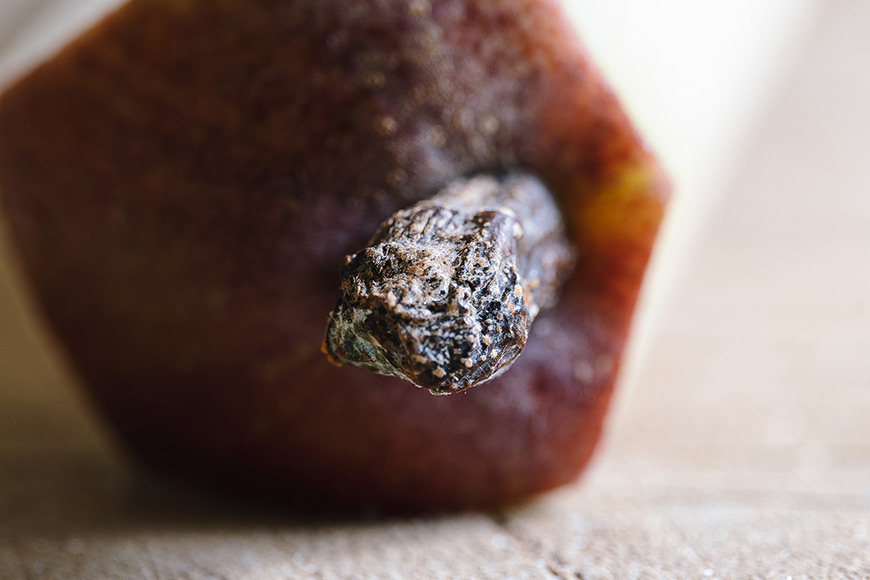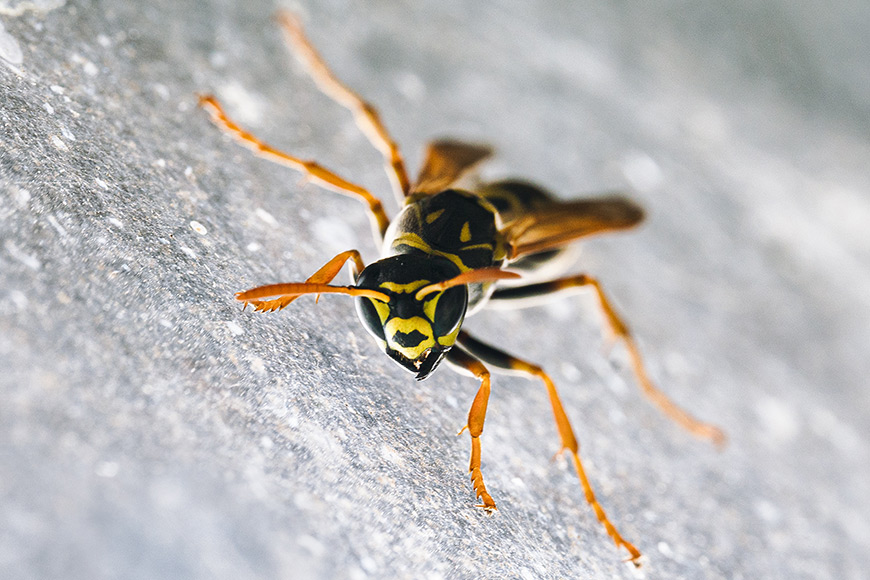
Sigma 105mm f/2.8 DG DN Macro Art Lens Review
Looking for an excellent value macro lens for a Sony or Leica camera that can also be used for portrait photography? This could be the ideal one for you.
Wondering if the Sigma 105mm f/2.8 DG DN Macro Art Lens is for you?
If you’re a Sony or Leica shooter wanting to get into macro photography, it can be quite difficult knowing where to begin.
For years now, I’ve been relying on my telephoto zoom for close-up shots, but I’ve always envied those who can really get in there and bring the world up close.

High quality macro lens for Sony, Nikon and Canon offering stellar image quality for close-up macro photography.
The two best options that fit my budget were the Sigma 70mm f/2.8 Art lens and the Sigma 105mm f/2.8 Art lens. Both have strong reviews and great prices. In fact, they seemed so similar, it was really hard to know which to choose – especially never having bought a dedicated macro lens before.
I settled for the 70mm, as it was less expensive. Still, when the opportunity came along to try out the Sigma 105mm f/2.8 Art lens, I leapt for it. I wanted to know which one was really better.
This is what I discovered.
Note: Please keep in mind that, while I’ve been an avid (and sometimes professional) photographer for more than two decades, I’m new to macro lenses – these are the first I’ve really spent time with. I still have a lot to learn about how to use them.
First, though, let’s start with the specs.
Table of Contents
What is the Sigma 105mm f/2.8 Macro Art Lens?
- Fantastic image quality
- Exceptionally sharp
- Focus limiter switch
- Short minimum focusing distance
- Beautiful bokeh
- Excellent build quality
- Great price
- No optical stabilization (in the mirrorless version)
- Some focus breathing
The Sigma 105mm f/2.8 Macro Art Lens is a high-quality macro lens, part of Sigma’s highly-regarded “Art” series of lenses, known for their exceptional optical performance and build quality.
Although primarily designed for macro photography, allowing you to capture intricate details of small subjects at a 1:1 magnification ratio, the Sigma 105mm can also be used for portrait photography.
With a maximum aperture of f/2.8, the lens can create a shallow depth of field, producing pleasing bokeh that helps isolate the subject and adds a beautiful aesthetic to images.
Sigma 105mm f/2.8 Macro Specs
- Minimum Aperture: f22
- 1:1 Macro
- Coverage: Full-frame
- Filter Size: 62mm
- Working distance: 14.1cm (5.5 in) at 1:1 magnification
- 9 aperture blades
- Weather-sealed
- Weight: 725g (1.6 lbs)
- Size: 74 x 135.6 mm (2.9 x 5.3 inches) without the lens hood
- Mounts: Leica L and Sony E
Build, Ergonomics, and Physical Features
The first thing you’re likely to notice about this lens is its size. Sigma tends to build pretty chunky lenses and the 105mm Macro is no exception.
It runs a full 5.3in (13.4cm) without the lens hood. Attach the lens hood and you’ll add on another inch. Weight-wise it’s also hefty – a full 25.6oz (725g).
That being said, the beefiness of this lens totally contributes to its excellent build quality. The lens barrel is a mixture of metal and “thermally stable composite” plastic with a brass bayonet mount.
The barrel itself feels solid and comes with a number of helpful switches: including a customizable focus AFL button, a focus limiter switch, and an aperture ring lock switch.
Weather Sealing
It also comes with full-fledged weather sealing against moisture and dust. If you’re like me, you’ll appreciate this, as I’m often shooting outside.
Overall, once I got used to the heftiness of this lens, it felt good in the hand. The size and weight also make it easier to hold steady when shooting hand-held, though expect to get tired after a while.
(I’ve been told that “real” macro photography is done with a tripod, but it’s hard not to want to get out and play without the extra gear sometimes.)
Aperture Ring
One feature the Sigma 105mm Macro lens has that’s totally impressive to find in a lens in this price range is an aperture ring.
If you’ve never used one before, it may take a moment to get used to, but it definitely is a plus for many shooters who like the feel of tactile adjustments.
The aperture ring on the Sigma 105mm Macro is nicely damped and has fairly stiff, yet pleasing action. It also makes a little click sound each time you change the aperture – definitely a plus if you’re a tactile shooter. (If you don’t like the clicks, you can turn them off.)
Aperture Lock Switch
One fascinating addition to this lens is Sigma’s inclusion of an aperture lock switch. This lets you keep it in manual (so you don’t accidentally bump it to the Auto position) or lock it into Auto so you don’t accidentally bump the ring and change your aperture unintentionally.
Focus Ring
The focus ring feels great to the touch – it’s well-positioned, nicely ribbed, and moves smoothly with just the right amount of damping.
I especially enjoyed the automatic focus assist (magnification of the focus area in the viewfinder or on the LCD) that engages any time you use it in manual focus mode.
Filter Size
One strange thing about this Sigma 105mm lens build is its odd filter – 62mm. Very few lenses come in that size and many filters don’t come in that size, so if you’re a filter user, this could be a limiting factor.
The aperture iris itself features the standard nine rounded blades.
Optical Stabilization
The Sigma 105mm f/2.8 DG DN Art lens does not have image stabilization, though its sibling made for DSLR cameras does. This is because today most Sony and Leica mirrorless cameras have IBIS, and while you could get a bit more stabilization by adding it to the lens as well, it’s not really needed. (This is one of the few places where the Sony 90mm f/2.8 Macro lens beats out the Sigma options.)
Personally, I got great shots with both Sigma macro lenses hand-held – surprisingly so.
Built to Last?
Is it built to last? It sure feels that way. Nothing about it feels cheap or flimsy. All the rings and switches move smoothly. Overall, it seems like amazing quality for the price.
Focus Performance

Sony A7 III + Sigma 105mm f/2.8 | 1/320 sec f/5 ISO 500
Stills AF
One place where the Sigma 105mm Macro really outshines the smaller Sigma 70mm Macro is in autofocus. Compared to its smaller sibling, the autofocus on the 105mm is downright snappy. It’s not as quick as some of my other lenses, but it was more than passable.
While I did find that this lens hunted a lot less than the 70mm, I can’t say that I noticed a huge difference when limiting the focus range. (There’s a focus limiter switch on the barrel.)
I found this a bit perplexing, as I was really expecting to see a clear difference in performance depending on how limited the focus range was. Maybe that’s due to my inexperience with macro lenses?
Video AF
To be honest, this wouldn’t be a lens I’d use for any kind of video work. There’s a fair amount of focus breathing and the focusing motor does a bit of buzzing that is sometimes audible in the footage.
But let’s be fair, if you’re looking at this lens, you’ll probably looking more for macro photography and/or portraiture than video.
Manual Focus
The focus ring is large and moves smoothly.
It’s not quite the same as focusing on a dedicated manual lens – instead of the focus changing with the turn of the ring, Sigma’s focus-by-wire system sends a command to the in-lens motor to refocus.
That creates a bit of lag and lack of sensitivity when making minute adjustments, but once I got used to it I found the process pleasurable enough.
Minimum Working Distance
One of the most noticeable differences between the 105mm and the 70mm is the minimum working distance.
The minimum working distance of 105mm is somewhat farther away – 5.5 in. – and while that gives you more room to maneuver than the 70mm, I found that I actually like to get closer to my subjects. (The minimum working distance of the 70mm is only 2.4 in.)
Depending on the nature of your subjects, this difference could be substantial. At the very least, it made for very different shots when I was using one lens vs. the other – especially when working in close quarters.
Image Quality
I loved the images that came out of this lens. The sharpness and level of detail just made this lens a joy to work with.
Sharpness

Sony A7 III + Sigma 105mm f/2.8 | 1/20 sec f/5.6 ISO 640
If you’ve ever shot with a Sigma Art lens before, you know that they’re wickedly sharp. The same holds true of the Sigma 105mm Macro.
You get fantastic sharpness throughout the aperture range – even wide open. The main challenge for new macro shooters will be deciding the best depth of field to work with (i.e. what to set the aperture to).
I found myself repeatedly surprised by how much of my subject was not in focus even at f/8. The parts that were, however, were pleasingly sharp.
Color Accuracy

At f/11 I really would have expected more of the markers to be in the focal plane. | Sony A7 III + Sigma 105mm f/2.8 | 1.3 sec f/11 ISO 100
While many reviews mention that the Sigma 105mm f/2.8 Macro lens has great color accuracy, I struggled with it a bit. Most of my images needed some level of correction.
Part of that’s likely due to the slight green cast that the Sony A7III is famous for, but I did seem to get better results from the Sigma 70mm f/2.8 (i.e. my images needed less editing).
Detail

Sony A7 III + Sigma 105mm f/2.8 | 1/13 sec f/4.5 ISO 100
The detail on the 105mm is exquisite – I was rarely disappointed and often quite delighted by the results. I could shoot from fairly far away and still get remarkable detail.
In some cases, there would be features I simply couldn’t see with the naked eye. Definitely, a delight to shoot with.
Below you can see a cropped-in example of the level of detail available on this pear stem. You can also see how narrow the focus plane is – even at f/4.5 only a bit of the stem is in focus.

Bokeh

Sony A7 III + Sigma 105mm f/2.8 | 1/50 sec f/4 ISO 800
One thing that I particularly liked about this lens (especially when compared to the Sigma 70mm) is the quality of the bokeh.
The Sigma 105mm f/2.8 macro lens has rounded aperture blades and that makes a discernible difference when compared to straight aperture blades (like the 70 mm’s).
Rounded blades will have creamier, more rounded bokeh, whereas straight blades will tend to create more polygonal bokeh.
It’s definitely a win for the 105mm.
Flare Resistance
Most reviews of this lens state that its flare resistance is above average. As I generally only have flare issues with my wide-angle lens, I didn’t really pay that much attention to the issue of flaring.
That being said, I shot in backlit situations plenty with this lens and did not once notice any flares.
Sigma 105mm f/2.8 Macro Sample Images
Here are more sample images taken with the Sigma 105mm f/2.8 Macro lens, using a Sony A7III.
In general, ISOs higher than 200 indicate that the image was taken hand-held (i.e. without a tripod).

Sony A7 III + Sigma 105mm f/2.8 | 1/100 sec f/8 ISO 100

I have to confess, I was wishing for more accurate colors on this image. | Sony A7 III + Sigma 105mm f/2.8 | 1/640 sec f/10 ISO 340

This image needed a crop, but still, I was delighted by the level of detail. | Sony A7 III + Sigma 105mm f/2.8 | 1/220 sec f/5 ISO 500

Sony A7 III + Sigma 105mm f/2.8 | 1/20 sec f/6.3 ISO 100

Sony A7 III + Sigma 105mm f/2.8 | 1/13 sec f/6.3 ISO 100

Sony A7 III + Sigma 105mm f/2.8 | 1/30 sec f/5 ISO 800

Straight out of camera. No adjustments beyond Lightroom lens corrections. | Sony A7 III + Sigma 105mm f/2.8 | 1/3 sec f/4.5 ISO 100

Sony A7 III + Sigma 105mm f/2.8 | 1/50 sec f/8 ISO 500

Sony A7 III + Sigma 105mm f/2.8 | 1/13 sec f/5 ISO 160

Sony A7 III + Sigma 105mm f/2.8 | 1/15 sec f/9 ISO 100
How I Tested the Sigma 105mm
In the time that I had the Sigma 105mm f/2.8 lens for review, I probably spent about four or five hours with it.
Some of that time was spent alternating between the 70mm f/2.8 just to see which I liked better.
I used it both hand-held and on a tripod, as well as both indoors and outdoors.
All testing was done on a Sony A7 III.
Alternatives to Sigma 105mm f/2.8 Lens
As mentioned before, the most obvious alternative to the Sigma 105mm f/2.8 Macro lens is the Sigma 70mm f/2.8 Macro lens.
It’s slightly lower in price (by about $250) and has similar features. Its major downside is its autofocus – you have to be really patient with it. Also, its bokeh is slightly less pleasing.
As far as other aspects of image quality are concerned, the Sigma 70mm f/2.8 macro lens has a slightly higher DxOMark score than the Sigma 105mm f/2.8 macro lens (19 vs 18). This matches my experience.
While both lenses have excellent performance in terms of sharpness, distortion, vignetting, and chromatic aberration, I found myself consistently appreciating the images from the 70mm more than those of the 105mm.
That being said, it’s lighter and smaller and fits much better in my kit. The 70mm also has a much closer working distance. For product photography, I’d probably choose the Sigma 105mm, as being a bit farther away is helpful in my set-up.
For plant life and animal life that doesn’t mind a lens up close, I would definitely choose the 70mm. For anything where you need a fast focus speed (and you’re not a deft hand at manual focus), you’ll definitely want the 105mm.
If you have a bit larger budget, you could take a look at the Sony 90mm F2.8 G Macro. It’s considerably more expensive, but it has optical stabilization in the lens that reportedly works well with Sony’s IBIS. It doesn’t have weather sealing, though, and by most accounts, the image quality isn’t as good.
The biggest downer with the Sony 90mm f/2.8 Macro is the price – just under $1100 at the time of writing. With the remarkable image quality of the Sigma 105mm (and the Sigma 70mm), it’ll be hard for many to justify shelling out that much more money for the Sony.
Value for Money
At less than $800, I think the Sigma 105mm f/2.8 Macro is an extraordinary value for the money.
The image quality that comes out of this lens is easily on par with or exceeds some of the much higher-priced Sony lenses I own.
I was immediately impressed and delighted by many of the images – especially the level of detail and sharpness.
The Sigma 70mm, at less than $500, is an even better value for the money, but you’ll have to live with its rather quirky autofocus.
Sigma 105mm f/2.8 Macro Art Lens Review | Conclusion
Should you buy this lens?
If you’re looking for an excellent Macro lens for Sony or Leica, and you like the working distance/focal length I’d say a definitive yes!
It’s a delight to work with, the image quality is outstanding, and the value for the money is over the moon.
Personally, I prefer the shorter working distance and the image quality of the Sigma 70mm, but if you need faster AF, you’d definitely want to opt for the Sigma 105mm.
All in all, I’d be hard-pressed to choose between the two.
If you’re not sure whether one works better for you than the other, I’d recommend taking them each for a spin via a rental company. It’s the only real way you’ll know which works better for you.
Either way, both Sigma f/2.8 Macro Art lenses are fantastic buys, and if you choose the 105mm you won’t be disappointed.

High quality macro lens for Sony, Nikon and Canon offering stellar image quality for close-up macro photography.
Teryani Riggs (they/them) is an adventure, who loves all things wild and free. Teryani can often be found in the midst of a social/eco-justice campaign, hiking through wild backcountry, or hitchhiking around the world listening to other people’s stories. While their focus has historically centered on landscape, travel, and wilderness photography, they’ve also been hired to shoot genres as varied as historical fiction reenactments in the studio to product and food photography.














